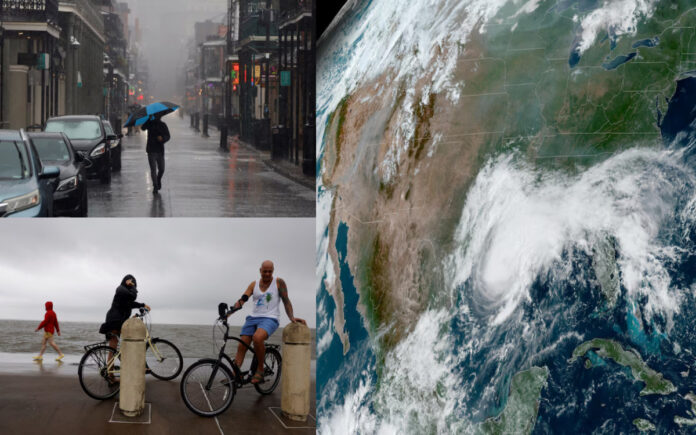New Orleans: Hurricane Francine made landfall in southern Louisiana on Wednesday, unleashing heavy rains and strong winds on New Orleans while posing a significant threat to the Gulf Coast region. Authorities issued evacuation orders for thousands as the storm’s potential to bring a life-threatening storm surge loomed.
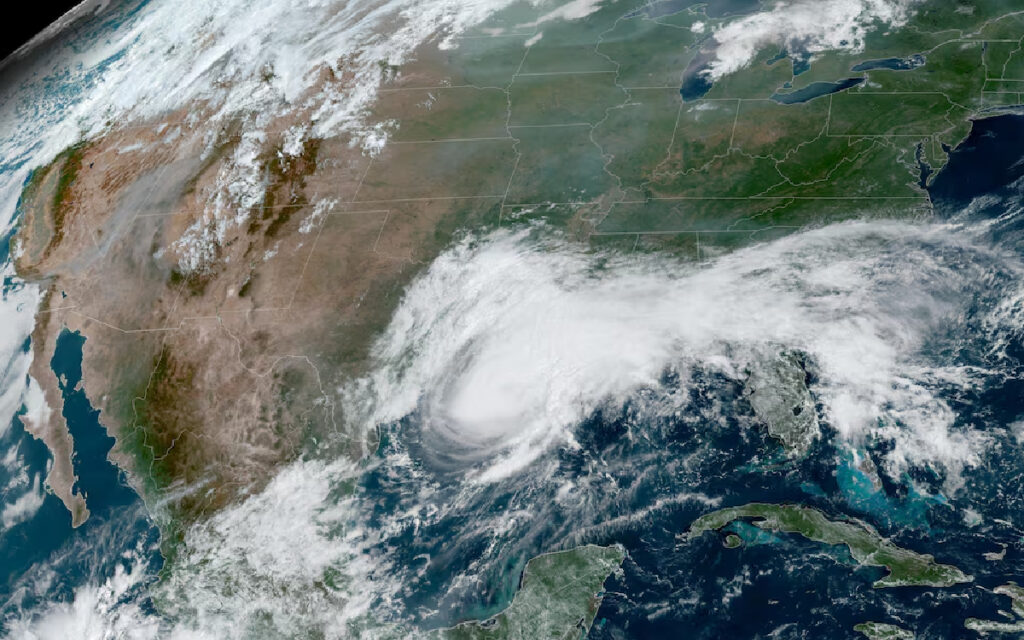
With maximum sustained winds of 75 mph (120 kph), Francine’s eye moved inland across southern Louisiana, positioning itself approximately 50 miles (80 km) west-southwest of New Orleans, according to the U.S. National Hurricane Center.
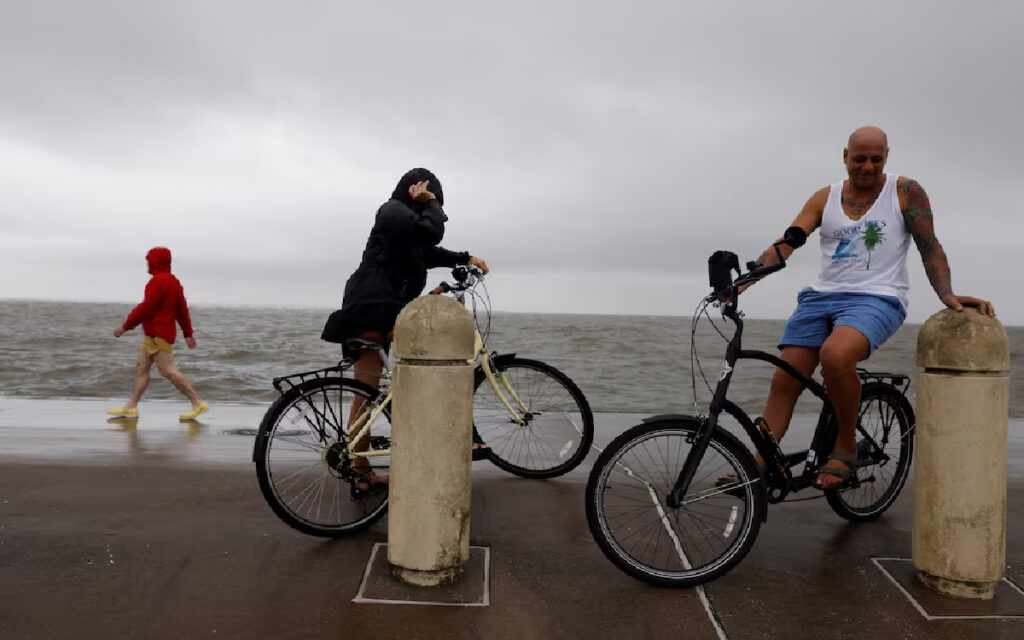
Before landfall, the hurricane center briefly upgraded Francine to a Category 2 storm on the Saffir-Simpson scale, only to later return it to Category 1 status. Despite this downgrade, the storm’s destructive winds posed a serious risk to life and property. The entire Gulf Coast, spanning Louisiana and Mississippi, was under a storm surge warning that the National Hurricane Center described as “life-threatening.”
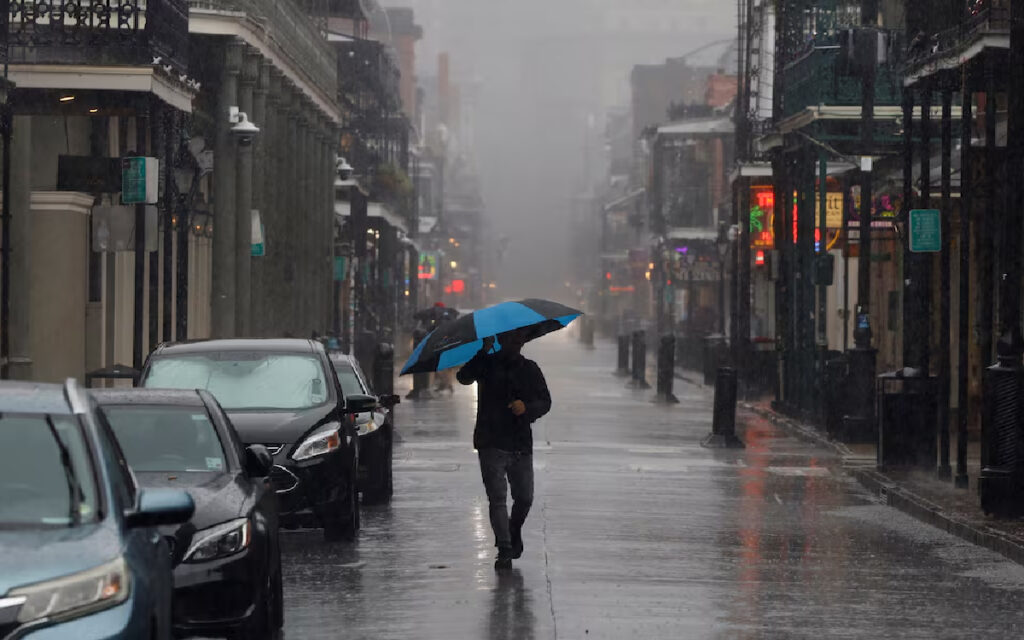
Power outages were widespread across the region, with over 200,000 homes and businesses in Louisiana left without electricity, as reported by PowerOutage.us.
New Orleans’ iconic French Quarter, renowned for its vibrant bars and restaurants, was largely deserted under a lockdown. A notable police presence kept the area secure, and only a handful of pedestrians braved the storm. On Bourbon Street, Gina Kralek continued her shift at the Clover Grill, covering for co-workers who had evacuated earlier.
“Normally, I evacuate, but I’ve got my three dogs,” Kralek explained. “Not everyone wants to take me with the dogs.”
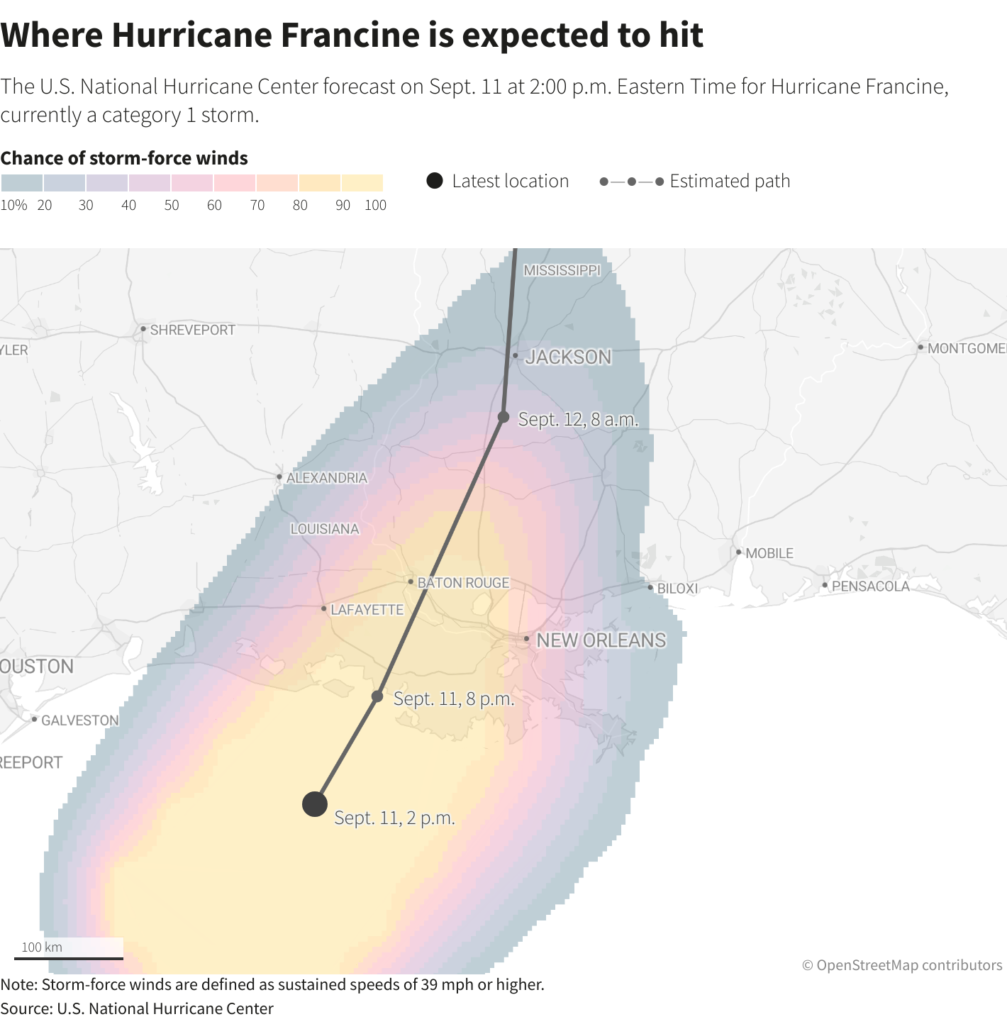
In anticipation of the storm, Louisiana Governor Jeff Landry and U.S. President Joe Biden declared a state of emergency, unlocking critical emergency management resources and potential financial aid if the damage becomes severe.
According to financial research firm Moody’s Ratings, more than 78,000 commercial properties valued at approximately $143 billion were in the storm’s direct path. The analysis estimated a higher than 50% chance that these structures would be exposed to winds exceeding 50 mph (80 kph), a threshold at which structural damage is probable.
Also Read | US Election Certification to Proceed with Heightened Security Following 2021 Capitol Attack
Evacuation orders were mandated in several Louisiana parishes along the Gulf Coast, with the state’s transportation department issuing evacuation routes. In New Orleans, officials distributed sandbags at five locations to help residents brace for potential flooding.
Hurricane Francine’s arrival stirs grim memories of Hurricane Katrina, the 2005 disaster that devastated New Orleans, resulting in nearly 1,400 deaths and $125 billion in damage. In the aftermath of Katrina, a $14.5 billion federal levee protection system was constructed, incorporating stormwater gates to prevent a repeat of the catastrophic flooding that plagued the city’s drainage canals during that time.

By late afternoon, grocery stores across New Orleans were boarded up as residents stocked up on essentials. Long-time resident Steve Rodriguez, who has lived in the city since 1983, shared his preparedness:
“We’re all set. We have our canned goods and our supplies,” he said, while grabbing some last-minute items.
Also Read | Soyuz MS-26 Docking Marks Key Milestone in Space Collaboration Between NASA and Roscosmos
The storm also caused a significant disruption to the region’s energy production and agricultural exports. Nearly 39% of oil and close to half of the natural gas production in the U.S. Gulf of Mexico had been halted by Wednesday, according to the offshore regulator. In total, 171 production platforms and three rigs were evacuated.


